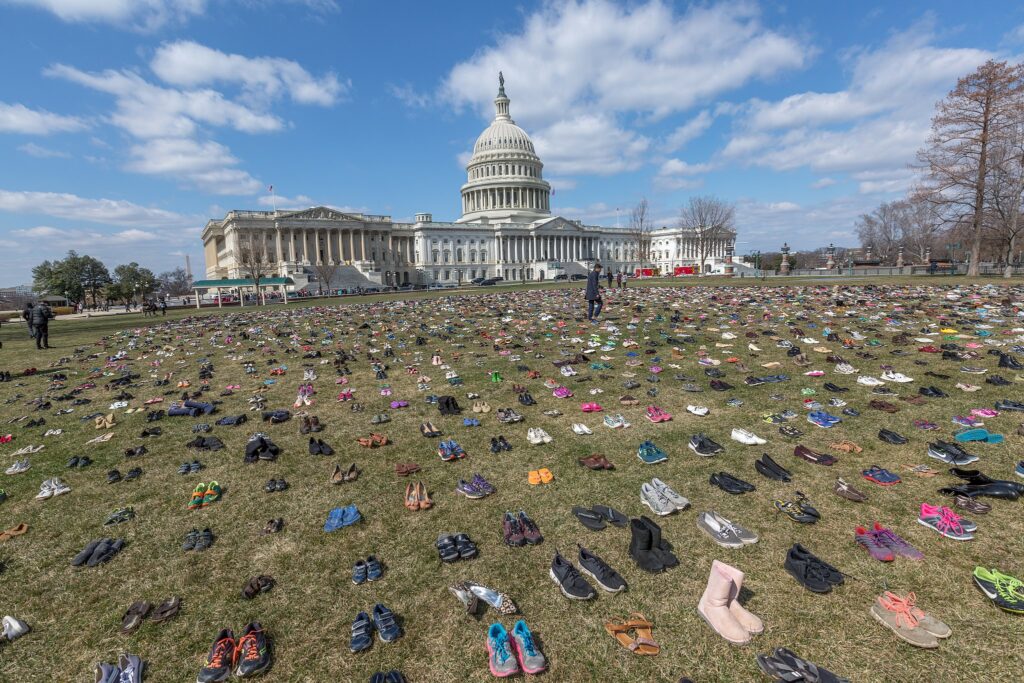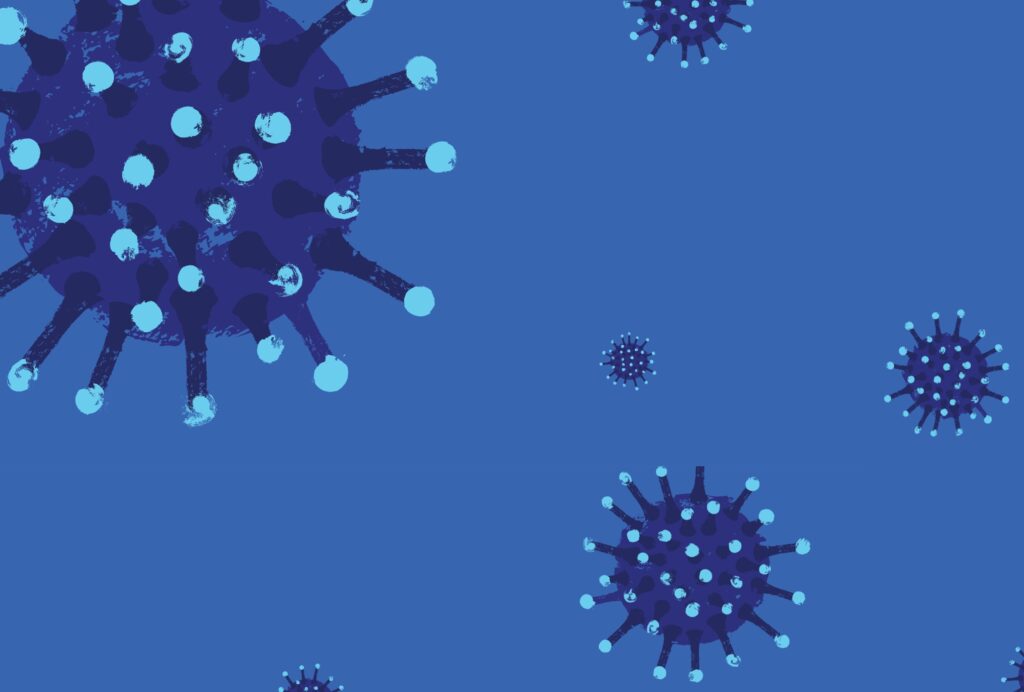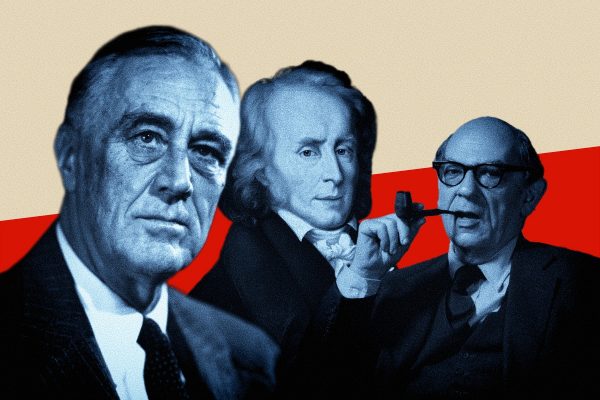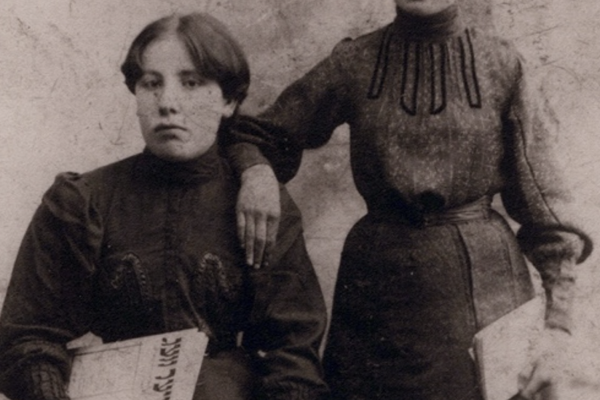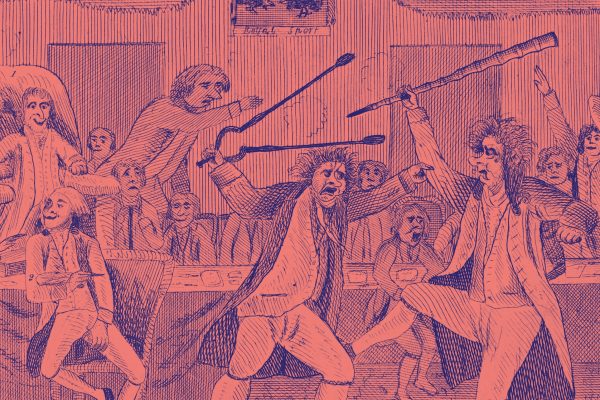On a hot day in March 1990, some sixty protesters organized by Americans Disabled for Accessible Public Transit (ADAPT) hurled themselves out of their wheelchairs, threw aside their crutches, and dragged, pushed, or crawled up the eighty-odd steps of the U.S. Capitol.
The Capitol Crawl was one of the most brilliant acts of political theater in U.S. history. It was both a literal and a symbolic enactment of the inaccessibility of the workings of democracy to people with disabilities, as well as their indefatigable will to win their rights. It showcased both the vulnerability of the body and the power of resistance—indeed, the power of bodies in vulnerability. And it worked. Four months later, President George H.W. Bush signed the federal Americans with Disabilities Act (ADA).
With COVID-19 we are faced with a contradiction: collective action never looked or felt more compelling, yet mutual care requires that we stay apart.
The Capitol Crawl is the climax of the new documentary Crip Camp by Nicole Newnham and James LeBrecht. The film chronicles the U.S. disability rights movement, from its fetal stage in the mid-1970s at a hippie summer camp for “handicapped” teenagers to its maturity and pinnacle achievement (so far), the passage of the ADA. It’s an organizer’s primer. But watching from my couch, isolated and immobilized by the pandemic lockdown, what struck me most about the film was the salience of the body to social movements.
Of course, there is no social movement in which the body is more obviously central than disability rights. But other examples abound. Emaciated mobs storming the Bastille. Pro-democracy demonstrators crushed by tanks in Tiananmen Square. Black students sitting, resolute and unflinching, at segregated lunch counters. Hunger strikes by Irish Republican Army prisoners. ACT UP’s “die-in” at St. Patrick’s Cathedral. Black Lives Matter gesturing fear and rage at police murders—“Hands Up! Don’t Shoot!”
And now, COVID-19 has birthed another body politics. As with disability and AIDS, the frailty of the flesh in the face of the novel coronovirus is exposing the feebleness of the neoliberal state to guarantee working people even the paltriest safety or security. That insecurity—and the consequent desperation to go back to work—is also fueling a new surge of convoluted right-wing libertarianism: the anti-social-distancing demonstrations that defy science and the frailty of the flesh while exalting death by COVID as martyrdom against tyranny, and defy tyranny while applauding Trump’s every authoritarian move. At the same time, the crisis holds the potential of radical progressive change. “It is shining a bright light on what we know in the labor movement,” Sara Nelson, president of the Association of Flight Attendants, told The Nation. “An injury to one is an injury to all.” The left is faced with the contradiction: collective action never looked or felt more compelling, yet mutual care requires that we stay apart. What does solidarity look like when our bodies cannot come together, in public, to agitate for a better world?
• • •
The pandemic has produced a new political identity out of medical risk compounded by stigma and marginality: the low-paid, brown, black, undocumented, and/or female “frontline” worker. These formerly invisible workers, most of them not unionized, have become the heroic face of the precariat. In mid-March, factory workers in Spain and Italy walked out to force their companies to cease inessential production and provide protective gear for those on the job. When New York Mayor Bill De Blasio hesitated to shutter public schools, New York City teachers planned a “sickout” to demand that they be closed for classes but kept open to distribute food and provide childcare for healthcare workers. The mayor complied the next day.
Just as social media is neither savior nor executioner of activism, activism will never be a matter either of thumbs or feet, screen or sidewalk.
Workers at Amazon warehouses and Whole Foods markets (also owned by Amazon); Instacart contractors and food processing plant employees in Virginia, Colorado, and Illinois; carpenters, sanitation workers, and nurses—all have left their stations and risked their jobs to demand basic amenities: masks and gloves, hazard pay, paid sick leave. Workers are linking their own wellbeing explicitly to the common good—teachers are speaking up for their students, doctors, nurses, and orderlies for their patients. In Lynn, Massachusetts General Electric workers staged two demonstrations to protest unsafe conditions and press the company to switch to producing ventilators. And while the Trump administration remains impermeable to shame, many employers have been compelled to make concessions for fear of looking like accomplices to murder.
In a crisis characterized by isolation, the most encouraging acts of political resistance are coming from workers endangered by proximity. They show us what every activist or student of social movements understands: bodies in the street—or corporate headquarters or nuclear power plant—play an irreplaceable role in destabilizing the status quo. “The strategy of being on the street in person is disruption,” said Sarah J. Jackson, Associate Professor at the University of Pennsylvania’s Annenberg School for Communication, and a scholar of race, media, and social movements. “Blocking traffic is getting things as they normally are to stop moving for a second and forcing [those in] power to pay attention.”
Such actions place individuals in harm’s way to demonstrate the harms inflicted by policies and systems. Yet movements also diminish individual vulnerability by transforming it into collective power. Bodies in the same space at the same time foster mutual aid and responsibility. During two lengthy sit-ins in San Francisco and Washington, which demanded equal legal protection for people with disabilities, protesters fed, dressed, and turned each other at night to prevent bedsores. Mutuality engenders trust, and trust, courageous action. Courage inspires solidarity. In California the Black Panthers arrive daily with meals. In Washington union members truck demonstrators around the city, which at the time has no accessible public transport, lifting them into and out of the trailer. All this builds power and forces change.
That power does not only manifest outward. It moves, physically, within a group, from body to body. Biologists identify a process called “flocking,” in which organisms, from bacteria to birds and fish, move as one. Choreographer, dancer, and activist Rosza Daniel Lang/Levitsky first became aware of this phenomenon among humans during a confrontation between police and Drag Marchers on New York’s Christopher Street. As police tried to disperse the crowd, a spontaneous line dance snaked between them and the marchers, “holding the street” and forcing the cops to back their cars out of the crowd. Lang/Levitsky recognized this “as dance-floor embodied knowledge”—wordless coordination and defense of space—“which should be “articulated and passed on.” Lang/Levitsky developed an activist training project called Just Like That, from the Ludacris lyric: “I move you move / just like that just like that.” An effective social movement is an agile, responsive organism. The flock is an anarchist corpus in kinetic self-creation.
With the flock dispersed to its separate nests, “there is this concern that we can’t show up en masse,” Sarah Jackson said. But she is not worried. “What I see is that organizers have gone into overdrive.” Once I started asking around, I found all kinds of activities with one common characteristic: the global pandemic has forced organizers to act locally.
The political universe does not divide neatly between those committed enough to stand in front of a tank and those who can’t be bothered to leave the house.
For one thing, not everyone is able to move indoors and into cyberspace. “Our people may not have laptops or fast WiFi,” said Kimi Lee, executive director of Bay Rising, a coalition of community organizations in the San Francisco Bay and Silicon Valley areas of California. The groups’ constituents may live in a garage and muster for day labor. The crisis is making difficult lives more difficult. People with disabilities can’t count on aides showing up reliably. Undocumented folks are easier to target at home than on a jobsite. “ICE is just putting on masks and continuing the raids,” Lee said. And of course, many face imminent hunger and homelessness.
While the organizations pressure authorities to strengthen sanctuary or enforce rent moratoria, then, volunteers help people survive: meeting them at food banks, printing information on grocery bags, doing “wellness checks” by phone. A caller with information about free tablets for school kids may wind up assisting a woman frantic to escape an abusive spouse. A worker’s shift ends at midnight; public transportation is down. A volunteer drives her home every night. “Our organization is rooted in personal relationships,” says Lee. “That’s how you reach people who are hard to reach.”
Disasters tend to bring out the good neighbor in most people, and political consciousness can turn neighborliness into activism. As a journalist, Carla Murphy covered organizing for years, but she never felt cut out for it herself. “I fear rejection,” she said, laughing. When the pandemic hit, however, she recognized her working-poor black and brown Brooklyn neighborhood and her building—owned by a neglectful landlord and inhabited by immigrant, largely Caribbean, families—to be at “high risk” (her hunch turned out to be right). Management had posted no information and undertaken no disinfection. Residents seemed oblivious to preventive measures. Murphy taped notes on apartment doors inviting others to chip in. A few got in touch and continue to communicate. When rent money gets scarce, the effort could turn into a tenant’s organization, Murphy said.
Protestations to the contrary, Murphy might be a born community organizer. Brought up in New York and Barbados, she is both big-city wary and small-town social. She knows every small social grouping has its busybodies and its fuck-everybodies; recently, someone in the building dropped used masks on the floor for someone else to pick up. Yet she greets everyone on the street. “That’s my Caribbean upbringing—the pandemic activates something that’s already within me,” she said. “So it isn’t changing me, except in the sense of making me bigger. Instead of just kind of sliding in and out and minding my own business, it’s making me step up.”
Travel restrictions have created rituals of local communing. Inspired by Italians singing from their balconies, Americans are opening their windows every evening to whoop, clap, and bang pots in appreciation of healthcare workers. It’s a non-confrontational form of the caceroloza common to Latin American protests. But the demonstration of love is also an implicit condemnation of a callous and incompetent administration that is putting lifesavers at unnecessary risk.
• • •
Considering the limitations, these efforts are remarkably corporeal. But in fact, almost every one is a virtual-physical hybrid. Bay Rising is sending hundreds of thousands of texts. Murphy’s group mounted a bulletin board in the lobby; she also is active on a neighborhood listserv. A California teacher’s union is reaching parents with compilations of homemade cell phone videos in English, Spanish, and Chinese by teachers giving encouragement and information. Organizers in Massachusetts launched the Mass Redistribution Fund, an online portal where people can donate their stimulus checks to local social justice organizations. Working at my desk, I received a text from Fight for $15 exhorting me to stand with striking California fast-food workers. I clicked through and signed the petition.
But what if we face a future of rolling lockdowns? Veteran organizer David Solnit has posted inventive adjustments to conventional in-the-flesh actions at varying levels of risk and precaution: encircle a bank with six feet between participants, for example, or hold a livestream rally. The goal is not to respond to this emergency but to keep climate justice activism alive in spite of it. What are the odds of that happening?
Twitter and other social media are critical in fostering communities, discourse, debate, and mobilization of “counterpublics”—black women, transpeople, survivors of sexual harassment, and other groups marginalized by elite media.
Less than zero, predicted Malcolm Gladwell in an October 2010 New Yorker piece entitled “Small Change: Why the revolution will not be tweeted.” Contrasting social media activism with the Greensboro lunch counter sit-ins, he wrote: “Facebook activism succeeds not by motivating people to make a real sacrifice but by motivating them to do the things that people do when they are not motivated enough to make a real sacrifice.” This is the well-worn critique of “clicktivism,” also called “slacktivism” or “political hobbyism”: click the link, sign the petition, toss in a righteous few bucks, and go back to watching Rachel Maddow. My own prejudice is not as absolute as Gladwell’s, but I admit, this piece was inspired by fear that anyone inclined to political agitation would soon be Zoomed into narcosis.
Jackson, who is also author, with Moya Bailey and Brooke Foucault Welles, of the new book #Hashtag Activism: Networks of Race and Gender Justice, mentioned Gladwell’s piece in our conversation. Then, she said, in January 2011 the Arab Spring exploded. Commentators hailed Twitter and Facebook as the chariot that carried the people to the revolution. Later, a more nuanced analysis emerged. Yes, activists used these platforms to disseminate information and change tactics on the spot. But social media also enabled authoritarian governments to eavesdrop, track dissidents, and jam communication.
Just as social media is neither savior nor executioner of activism, activism will never be a matter either of thumbs or feet, screen or sidewalk. “People are able to use whatever tools, resources, or medium they have to make demands and solidify and promulgate social movements,” Jackson told me. Twitter and other social media are critical in fostering communities, discourse, debate, and mobilization of “counterpublics”—black women, transpeople, survivors of sexual harassment, and other groups marginalized by elite media. Social media functions like the consciousness-raising groups and underground press of the 1960s and ’70s, but a zillion times faster and bigger. At the same time, the “in-person, long relationships of mutual care and responsibility—of radical love—will always be necessary.”
Nor does the political universe divide between those committed enough to stand in front of a tank and those who can’t be bothered to leave the house. In between are the cell phone videographers, Facebook posters, and retweeters whom some data and political scientists have called the “critical periphery.” They may never show up to a march but their “aggregate contribution to the spread of protest messages is comparable in magnitude to that of core participants,” these scholars say.
Even Zoom can bring us closer. “We’re entering people’s homes,” said Emily Feinstein, a Brooklyn artist and restorative practices trainer. “That’s allowing us an intimacy and connection we didn’t have before.”
In any case, humans won’t give up touching. Among his other suggestions, Solnit proposes an “art-in”: everyone makes a sign with a common message in “paint, chalk, pencils, markers, paper cutting, fabric, embroidery, aplique, quilting, weaving, printmaking, collage, computer design, etc.” Photograph and distribute the sign online or put it in your window, he says. But take good care of it, he advises, because “this is the sign you will bring out when conditions allow us to fully take it to the street and banks again.”
